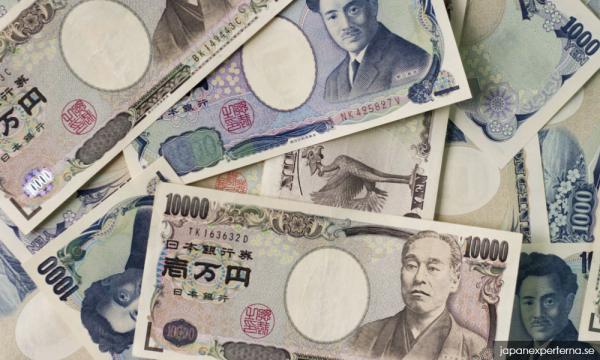The onset of world financial market stress is usually heralded by the ringing of several alarm bells, few of them louder than a steep and rapid rise in the value of the Japanese yen.
Worryingly for investors as 2019 gets underway, not only is the yen surging, other warning signs are flashing too, suggesting we are in for a volatile and choppy year.
Bond yields are plunging, gold is rising, US financial conditions are tightening, and cash is king. Little surprise, therefore, that the Japanese currency on Thursday had its best day since May 2017 after a flash crash in illiquid Asian trading briefly slammed the dollar below 105.00 yen.
Implied volatility in dollar/yen is the highest since last February's "volmageddon" episode and the weekly standard deviation is the highest in over two years. Meanwhile, worries over global growth, trade wars, and a rare revenue warning from Apple are slamming stock markets around the world.
The yen has become the totem safe-haven asset for investors over the years, despite Japan's relatively sluggish economic growth and low - even negative - interest rates and bond yields.
In benign market conditions, Japanese investors pour money into a range of assets overseas, seeking relatively higher rates of return. In times of stress, this so-called carry trade is reversed and the considerable repatriation flow of funds boosts the yen, sometimes suddenly and sharply.
That wall of cash has grown substantially in recent years.
According to Morgan Stanley, Japanese investors' portfolio investment into US assets has more than doubled in the last 15 years to some US$1.25 trillion (RM5.2 trillion).
These holdings have increased by more than US$400 billion since 2011 alone, mostly in riskier equities. When market storm clouds gather, Japanese investor demand for home currency rockets.
Standard deviation
Previous bouts of intense market volatility over the last 20 years have triggered similar warning shots to those being fired now.
Amid the swirling chaos of the Asian, Russian and LTCM crises in September-October 1998, US financial conditions tightened sharply, with the St Louis Fed's Financial Stress Index reaching 1.535 in the week ending Oct 16.

Outside the Great Financial Crisis of 2007-08, that is the highest level since the index was launched in 1994. It is at a much lower level today, but it's still the highest since March 2016, and rising.
In early October 2008, just days before Lehman, the 10-year US Treasury yield was above 4.00 percent, and by the end of the year it was barely holding above 2.00 percent. Remarkably, considering the Fed is still raising interest rates, the 10-year yield has fallen 60 basis points in the last two months.
While these moves are a clear reflection of darkening market clouds, they are relative slow burners. For a more instant view, those of us with a few miles on the clock instinctively look to dollar/yen.
On Oct 7, 1998, the dollar plunged more than 10 big figures, or 7 percent. It remains dollar/yen's biggest single-day fall in 45 years, leading to a daily standard deviation move of almost 7.0 the following day, also the biggest rise in 45 years by that particular measure.
That was my first week as a financial journalist. I had no idea what a big move in the Japanese currency signified or why it mattered, but it proved to be my first and probably most enduring lesson on markets.
In the second half of the following year, the dollar lost 20 percent against the yen, almost falling below 100.00 yen. It wasn't long before the US tech bubble burst and the US economy slipped into recession, albeit a shallow one.
Rapid yen appreciation in 2008 coincided with the collapse of Lehman Brothers and the carnage that then swept through global markets. Dollar/yen again tumbled some 20 percent in the second half of that year, and the daily standard deviation of 2.72 on Oct 27 remains the highest since the October 1998 turmoil.
A series of steep declines in the first half of 2016 saw the dollar slide below 100.00 yen, as fears over China's economy gripped investors and Beijing's international reserves were ultimately drawn down to a six-year low of US$3 trillion.
Here in the first few trading days of 2019, the yen is on the move again. And like those previous bouts of market volatility and weakness, it is not in isolation: gold and high-rated sovereign government bonds are also rising strongly, yield curves are flattening and banking stocks are underperforming.
Hold onto your hats, and keep a close eye on the yen.
- Reuters


